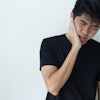Editor's note: Allan Farman's column, Talking Pictures, appears regularly on the DrBicuspid.com advice and opinion page, Second Opinion.
The Second Opinion blogs and forums on DrBicuspid.com are meant to be a rapid means of updating information and initiating debate on select topics impacting the practice of dentistry. They also provide a sounding board for those on the front lines following guidelines and using products to provide healthcare.
Blogs are useful because they can be an effective way to communicate opinion -- opinion that is scrutinized and responded to when there are disagreements. In this manner, they can be a sounding board. Blogs do not have the more detailed review of articles that is provided by the staff editors, who will take a recent peer-reviewed article and seek "expert" opinion on the validity and importance of that publication.
In addition to my contributions to DrBicuspid.com, I also participate in the peer-review process as a scientific editor of the radiology section of Oral Surgery, Oral Medicine, Oral Pathology, Oral Radiology, and Endodontology; the radiology editor for Cranio; and the deputy editor of the International Journal of Computer Assisted Radiology and Surgery. As such, I am familiar with the peer-review process. Generally, four to six reviewers are assigned any scientific paper that is considered worthy of review, and for at least one of the journals I help edit, the rejection rate can approach 85%.
For scientific papers, the authors need to comprehensively review the existing literature and demonstrate either a controversy that is in need of clarification or a dearth of knowledge that needs correcting. They then need to develop a hypothesis and valid and reproducible means of testing that hypothesis. The discussion and conclusions should be substantiated by the results.
For treatment regimens, the highest form of evidence is generated by prospective randomized clinical trials. Very few such studies exist for dental treatment that provide high evidence of improved healthcare outcomes. It should be cautioned, however, that the absence of strong scientific evidence should never be interpreted as being the same as a treatment or that the diagnostic modality is ineffective. It simply means that nobody has yet conducted trials that are considered to be of the highest quality.
For diagnostic imaging, the ideal gold standard would be proof of disease presence or absence in vivo. This is not always easy to achieve as one usually does not wish to extract teeth (for example) simply to determine whether proximal dental caries is present or absent. Surrogates are therefore sometimes employed for evaluating imaging modalities. For dental caries, this often involves extracted teeth placed in plaster with a scatter medium to represent soft-tissue effects.
Such in vitro studies never fully represent the in vivo situation. When natural disease is used, this is a reasonable "rough and ready" guide for comparing modalities; however, when lesions are simulated by a bur, they only represent detection of bur slips rather than noniatrogenic disease.
It is the role of the peer-review mechanism to establish validity of claims in a scientific paper and especially to make authors add appropriate caveats when needed.
So what is the role of the blog? It is primarily to debate areas that are controversial and provide personal views concerning issues that cannot be decided by science. It should be used judiciously, and where evidence is available, this should be referenced. Blogs should not be used as a game to goad, inflame, and insult. Yes, people will have different opinions on many matters. This is the place to air such differences and develop the arguments for and against each point of view based upon the best evidence.
Remember: The blog is not peer-reviewed and has an acceptance rate approaching 100%. But when it comes to blogs and forums, you need to act as your own "peer reviewer" and question everything that is presented before following the suggestions that are made.
The comments and observations expressed herein do not necessarily reflect the opinions of DrBicuspid.com, nor should they be construed as an endorsement or admonishment of any particular idea, vendor, or organization.
Copyright © 2009 DrBicuspid.com



















